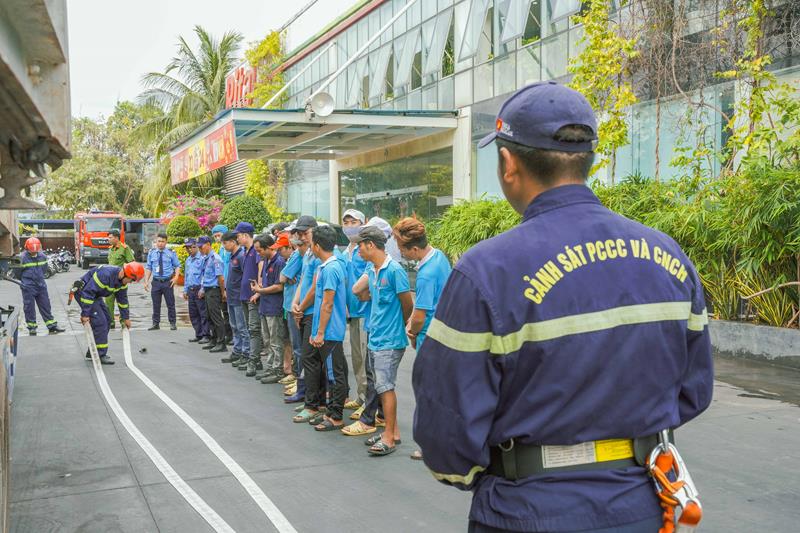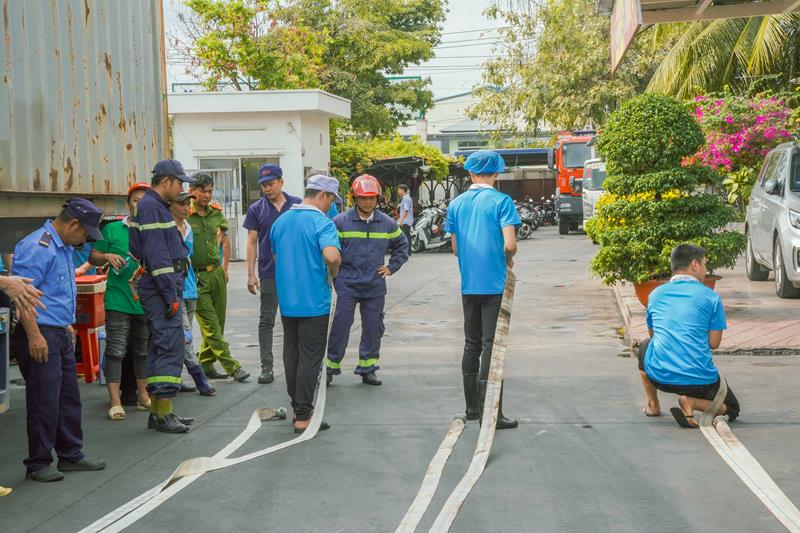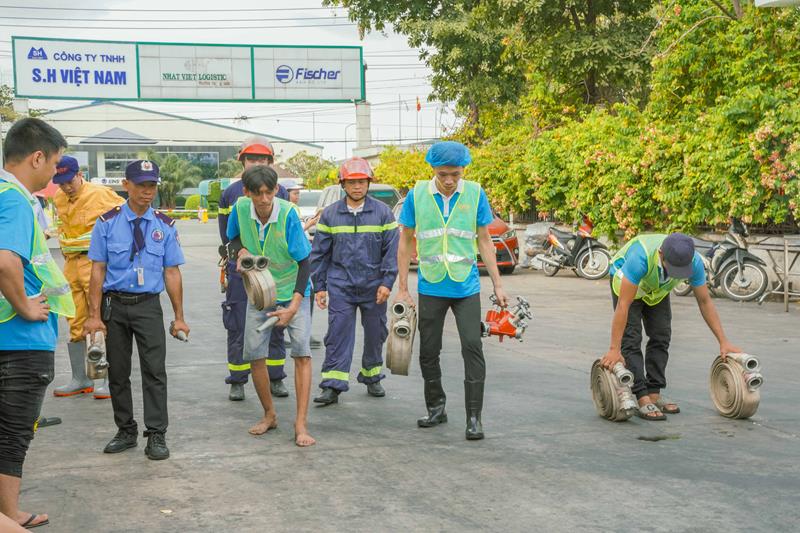Annual Fire Fighting Training at RITA Company
On April 5th, 2024, RITA company collaborated with the Fire and Rescue Police Department of Di An City, Binh Duong Province, to organize an annual fire fighting training program for its staff. The training session aimed to provide knowledge on fire prevention, firefighting techniques, rescue and evacuation procedures, practice firefighting plans, and maintenance of firefighting equipment.
Fire Fighting Training - Enhancing Skills and Awareness for Employees
In addition to theoretical learning, a team of 25 members from RITA Company's fire department participated in practical exercises based on simulated scenarios.
According to the evaluation by the responsible unit, the training session yielded promising results, with the technical system operating smoothly. The team effectively fulfilled their roles and tasks, cooperating well with relevant units in handling situations. However, this was just a simulated training session, which differs significantly from real-life emergencies. Therefore, employees need to enhance their awareness and responsibility in fire prevention and undergo further training on necessary skills.
Ensuring fire safety in the workplace is a crucial factor that must be considered. RITA always prioritizes fire safety measures to protect the lives and assets of its employees.


Additional Information
Fire Prevention and Firefighting Skills
Common Causes of Fires
Before delving into fire prevention and firefighting methods, it is crucial to grasp the common causes of fires. Here are several prevalent reasons:
Causes from Electricity
Electrical malfunctions, overloads, and leaks can lead to explosions and fires.
Causes from Cigarettes
Discarding lit cigarette butts in trash cans or flammable areas can cause fires.
Causes from Cooking
Forgetting to turn off stoves or grease catching fire due to negligence is also a common cause.
Causes of External Fires
Fires spreading from surrounding buildings or forest fires can also impact and spread.



Active Fire Prevention Measures
In addition to equipping firefighting systems, applying active fire prevention measures is also very important.
Regular Inspection of Firefighting Systems
Ensure that the system is always functioning correctly.
Training Employees on Fire Prevention and Firefighting
Organize regular training sessions to raise awareness and skills for employees.
Evacuation Planning
Prepare detailed evacuation plans and focus on ensuring everyone knows how to respond in case of a fire.
Passive Fire Prevention Measures
Furthermore, incorporating passive fire prevention measures is essential for safeguarding the company's safety. Below are several measures you can adopt:
Install a sprinkler system
A sprinkler system automatically sprays water when a fire is detected.
Use fire-resistant materials
Using fire-resistant materials to prevent rapid fire spread.
Conduct regular inspections
Regularly inspect and maintain fire extinguishing systems to ensure effective operation.



Fire Evacuation Procedure
A safe evacuation procedure in a fire will help everyone escape danger quickly and efficiently. Here is a basic evacuation procedure:
Stay calm and avoid panic
Keep calm and instruct employees not to panic.
Evacuate following the safe route.
Follow the pre-established evacuation plan to avoid collisions and confusion.
Check thoroughly before leaving the area
Ensure no one is left behind and everyone has evacuated safely.


In conclusion
Workplace safety depends on fire safety training and emergency response. It gives employees the knowledge, skills, and confidence to stop and react to fire emergencies.
Yearly firefighting training is critical for fire safety. It keeps employees updated on new rules and gives them practical experience so they can handle fire emergencies with confidence and skill.
Safety is a collective responsibility. Through collaboration and staying informed, we can enhance workplace safety and security for everyone.


